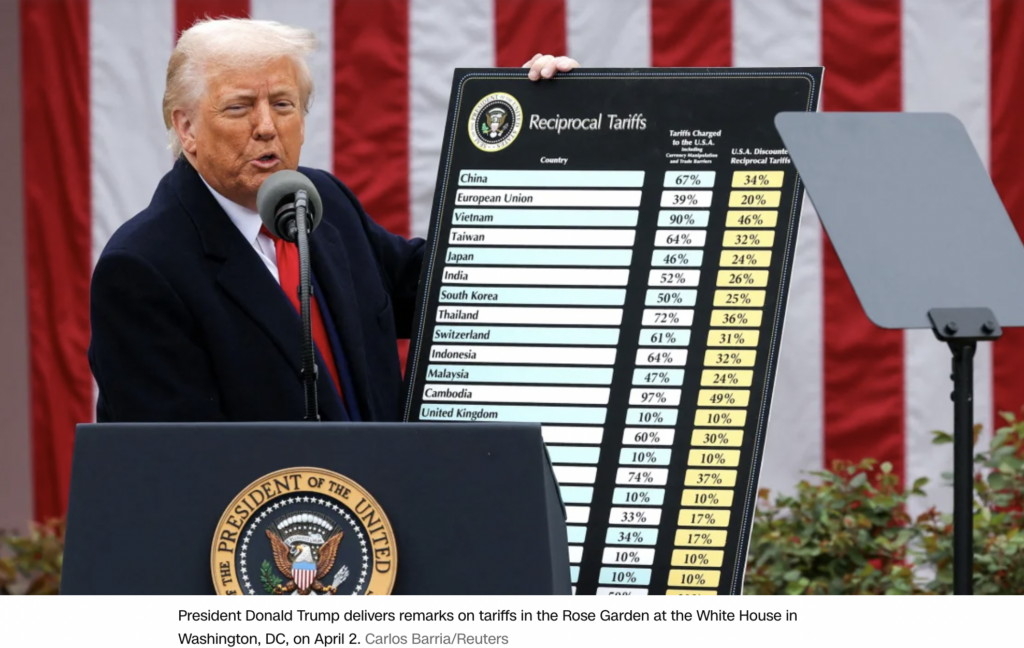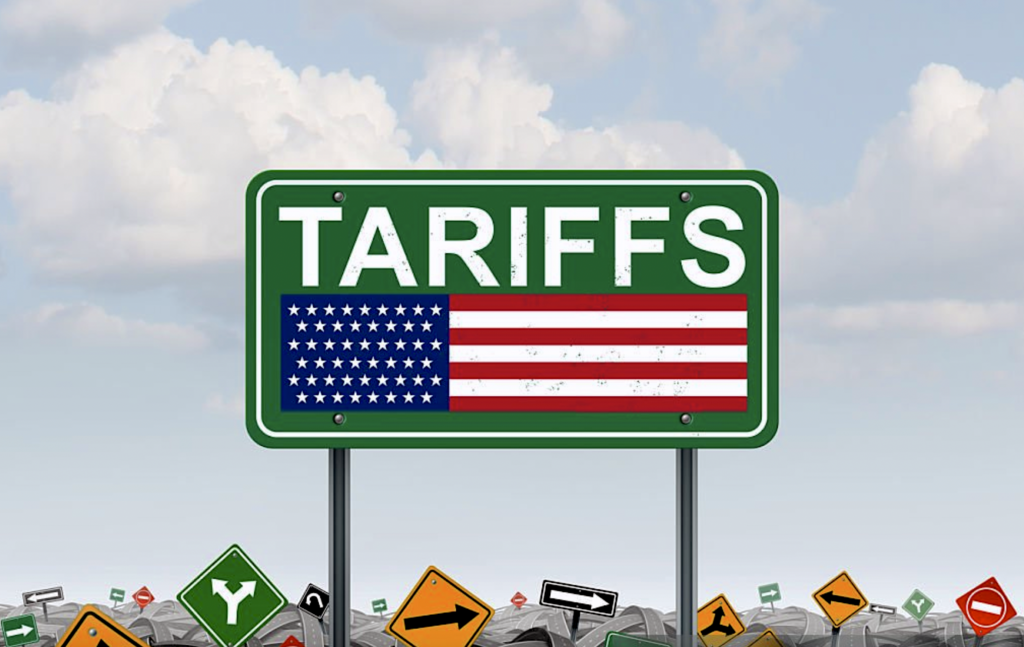It has been a wild and captivating month of April for the global economic meltdown, and the United States of America is the one culpable for all the bewilderment.
On April 2nd 2025, US President Donald Trump announced tariffs across all countries of the world that it does trade with, including exponential tariffs for 60 odd countries or trading blocks that fall under the ambit of a high trade-deficit with the United States.
China, being the second top exporter to the US (behind Mexico) was slapped with 54% tariff, whereas, India (a strategic US partner) was imposed a whooping 26% tariff. The Trump administration hopes to reach tariff deals with U.S. allies as he prepares to lead negotiations with more than 70 countries in coming weeks. Meanwhile, Trump has also asked world companies to relocate to the US in order to avoid tariffs in the future.
It is an irony that five of the countries singled out for tariffs above the 10% minimum – Syria (41%) Congo (11%), Madagascar (47%), Mozambique (16%), Malawi (18%) – are among the world’s 26 poorest economies. Among other countries singled out with the highest tariff rates is Myanmar (44%), a nation recently hit by a massive earthquake that has killed more than 3,000 people. It only underlines that the fact that these US tariffs are impromptu efforts on the US side, and not a rational one perhaps.

IMPACT ON MARKETS:
It was evident that the global marked took a massive fall after the announcement of tariffs on all countries. The US stock markets fell sharply, so is the case with the Asian and European markets. Whereas, gold hit a new record high as investors seek safer investments. From DOW, S&P500 to Nasdaq 100, all plummeted including Asian benchmarks like Nikkei 225, KOSPI and Hang Seng Index all took a hit. Apple too tumbled more than 7%. The tech giant relies extensively on supply chains in China including manufacturing, which is subject to steep tariffs. Tesla stocks fell more than 6%, Amazon stocks plummeted more than 6%, Nike 7%, Walmart 6%, among other multi-billion dollar conglomerates reeled to the apprehensions of US tariffs.
THE CHINESE CONUNDRUM:
Donald Trump has now announced a three-month pause on all the “reciprocal” tariffs that went into effect, with the exception of China. US levies on Chinese imports had been set to increase by 34% on April 2nd as part of Trump’s “reciprocal” tariffs.. But the president tacked on another 50% after Beijing didn’t back down on its promise to impose 34% retaliatory tariffs on US goods by noon Tuesday. Prior to the latest round of escalation, Trump had already imposed 20% levies on China since his return to the White House.
China has promised to take “resolute and effective measures” to safeguard its interests, hours after US President Donald Trump’s 104% tariffs on Chinese imports took effect on April 9.
China also announced it would raise its levies on U.S. goods by 50%, adding to the 34% increase previously announced and due to be implemented on April 10, to bring the total additional duties on U.S. imports to 84%, in an attempt of retaliation from Beijing’s end. The Chinese Commerce Ministry also said that it would implement tighter restrictions on exports of rare earths —materials used in products such as computer chips and electric vehicle batteries, in the days to follow.
THE TOLL ON USA’s PURCHASING POWER:
Majority of all iPhones are still manufactured in China, although Apple has shifted some of its iPhone manufacturing to India. However, the Trump administration will also be adding a 26% reciprocal tariff to Indian imports, making iPhones dearer to the US consumers back home, in the long run.
As most U.S.-made vehicles include parts imported from other countries, which will face new tariffs and increase the purchase price of those cars manifold ranging from $2,500 to $5,000 for the lowest-cost American cars, and up to $20,000 for some imported models.
Most of the apparels and footwear sold in the US is manufactured outside the U.S., with China, Vietnam and Bangladesh among the biggest exporters and All three nations will face reciprocal tariffs from the Trump administration, at 104% for China, 46% for Vietnam and 37% for Bangladesh. Italian and French wines and Scottish whisky are going to get more expensive in the USA, as the EU imports will face a reciprocal tariff of 20% while UK-made products will face a 10% import duty. These will eventually have ripple effects in the industry in the long run and certainly plummeting the purchasing power of the US consumers very harshly.
The furniture market is also very cost sensitive in the US, as 30-40% of all furniture is imported into the US and shall surely take a hit if China is continued with the 104% tariff. Similarly, Swiss imports to the U.S. will face a new reciprocal tariff of 31%, which will impact watches from affordable brands such as Swatch to pricey timepieces manufactured by the likes of Rolex.
Chocolate is another major Latin American import. With countries like Cote d’Ivoire and Ecuador facing reciprocal tariffs of 21% and 10%, there impact on the local US economy would be a misadventure. Also, USA imports about 80% of its coffee beans from Brazil and Colombia, both of which are facing 10% tax each.
India was slapped with some of the highest tariff rates for a major US trading partner, but at 26%, was not hit as its Asian peers- viz., Sri Lanka ( 44%) and Bangladesh (37%).
India and the US share strong partnership in terms of trade relations, economic relations, investment relations, commercial relations, among others and in this backdrop, India is currently under active negotiations to mitigate any apprehension going forward with the tariffs as Sensex and Nifty faced loses in the Indian context.
The European Union announced on April 9 tariffs on more than $22 billion in U.S. products, including beauty products, soybeans and motorcycles. The EU considers U.S. tariffs provocative and unjustified causing economic harm to both sides, as well as the global economy.
The silver lining for investors could be that – although it is merely the beginning of negotiations with other countries and ultimately tariff rates shall eventually reduce across the board — but for now, the traders are shooting first and asking questions later. Small businesses in the US will be forced to “bear the brunt” of constantly changing tariff policies that most certainly thrust them to inflate rates at the US consumers’ end. Thus, unveiling the curtains for a recession like no other.
(Note : This is a fast developing story, and additions shall be made to this article, as and when necessary.)
Written by- Banraj Kalita.

Very nice analysis of the topic! Great work.